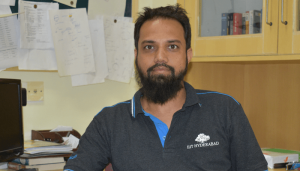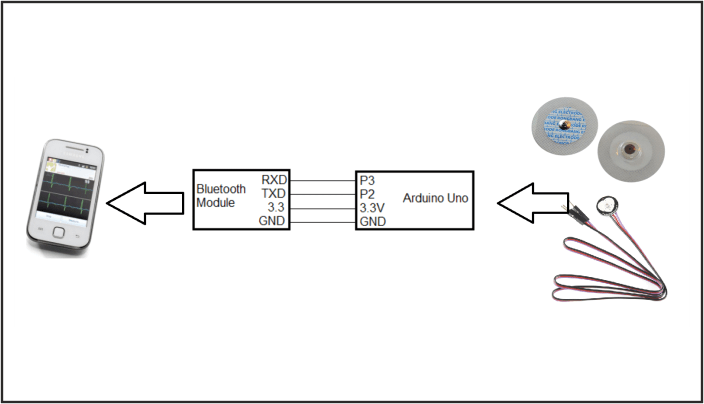Worldwide, deaths due to cardiovascular diseases are on the rise and a large proportion of them can be attributed either to hypertension or hypotension making blood pressure monitoring an important factor in disease prevention. However traditional methods of BP monitoring while aplenty, have many drawbacks. To combat these, researchers at IIITH have developed a unique algorithm for cuff-less ambulatory BP recording that overcomes current limitations.
It was a conversation with Dr. Somaraju B, Chief of Cardiology, Care Hospital, Hyderabad that got Dr. Azeemuddin Syed from the Center of VLSI and Embedded Systems Technologies (CVEST), IIITH thinking. Applications of IoT in the healthcare space are not new and its usage has only increased manifold transforming the landscape of real-time health monitoring. Take the case of blood pressure monitoring. The most widely used methods of monitoring BP are intermittent and non-invasive. Dr. Somaraju was talking about the drawbacks in the current methods of measuring BP that use a cuff-based mechanism. Not only does repeated tightening of the cuff around the arm cause tissue damage due to occlusion of the artery, but in the case of digital monitors, it is not entirely reliable and precise. To measure blood pressure accurately and to capture fluctuations, it is essential to measure it continuously during a specified period. This is especially true in the case of low BP or hypotension where prior symptoms may not be typically experienced but if left untreated may cause damage. Continuous and ambulatory BP monitoring also helps overcome a frequently experienced phenomenon known as White Coat hypertension, a situation where there is an elevated BP reading due to stress not exhibited otherwise.

How It Works
Clinicians find the ability to track changes in BP through continuous devices particularly helpful in managing patient care. However continuous devices are prohibitively expensive and typically used in the care of critically-ill patients. Dr. Syed and MS by Research student from CVEST, Muskan Singla in collaboration with Care Foundation, Hyderabad, have been working on a novel methodology that uses a combination of electrocardiogram (ECG) and photoplethysmographic (PPG) signals. For collecting data, they approached Care Foundation from where they obtained ECG and PPG datasets simultaneously from patients ranging in the age group of 25 to 59 years. Using these datasets, they then proposed an algorithm that estimates systolic and diastolic blood pressure by using multiple features as input.

Explaining the technology behind the method, Dr. Syed says, “In order to estimate BP accurately, we require various features from ECG and PPG signals. These features such as P wave, Q wave, R wave, etc. from ECG signal and diastolic peak, systolic peak, etc. from PPG signal, can be accurately extracted using Adaptive Window Wavelet Transform (AWWT)”.
The Device
The device which is currently being prototyped is portable where the patient has an ECG electrode attached to the chest as well as a PPG light source sensor worn like a sleeve over a finger. Data is collected simultaneously by both these sensors using Arduino and BP is estimated using pulse wave transit time (PWTT). Using bluetooth, data is transmitted to a mobile phone where an application on the phone reveals the required waveforms. The same data can also be uploaded onto a server where it can be processed. Not only will the device score in its compact dimensions, it is proposed to consume less energy allowing it to have a prolonged battery life. With its ability to process data in-node, it will also save considerable bandwidth.
Technology Transfer
The Technology Transfer Office at IITH manages the transfer process of Intellectual Property (IP) produced in IIIT-H to appropriate bodies including industry, entrepreneurs, etc. and makes all attempts to commercialize the IP. As the first step in the process, the TTO team helped the researchers in applying for a patent. “This patent-pending technology is rather unique in that it is low cost and non-invasive. We are currently studying the market and will productise it as per market needs in the next step,” says Prakash Yalla, Head of the Technology Transfer Office at IIITH. Ramesh Loganathan, COO, Product Innovation, sees potential for the product in the realm of sports and hospital care. “We can license it to other medical equipment manufacturers,” he says.



Next post